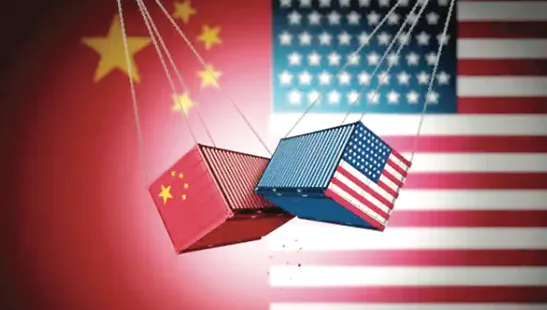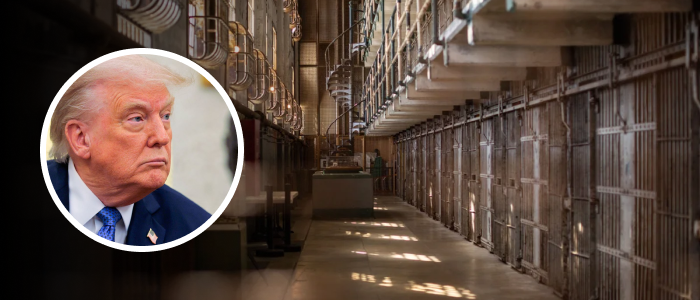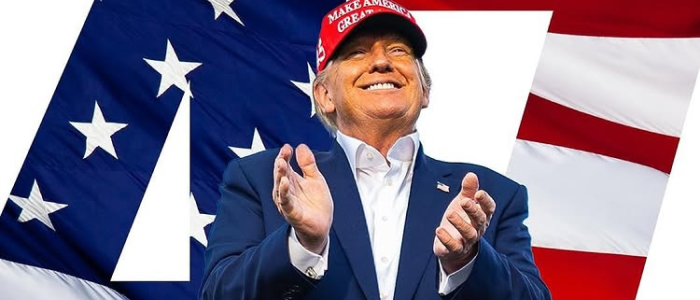In my last article on the tariff war, I said that when elephants fight, the grass suffers. Right now, the elephants are in Washington and Beijing. As the United States and China, the number one and number two economies of the world, plunge deeper into a bitter tariff war, the fallout is being felt far beyond their borders.
Markets reel, supply chains creak, and a new global economic order begins to take shape. Caught in the middle, countries like India, sitting on the fence, are charting a cautious course, seeking opportunity without becoming collateral damage. The big question looming large over global markets is simple: Who blinks first—Donald Trump or Xi Jinping?This is not a mere skirmish over trade imbalances.

What seemed at the beginning to be US tariffs on Chinese goods has ballooned into a structural economic showdown; however, tariffs on both sides went up unexpectedly and within a short span of time. Washington’s levies on Chinese imports have jumped from 10% to a whopping 145%, while Beijing has responded with countermeasures up to 125%. The scale of escalation is no longer symbolic.
It is systemic, and still, mercury keeps going up.In all this ongoing melee, China’s economy has shown surprising resilience. Chinese officials said the GDP grew by 5.
4% in the first quarter of the year, beating expectations. Retail sales and industrial output helped cushion the blow, though some of the performance was likely driven by front-loading exports before higher tariffs kicked in. Officials in Beijing remain defiant.
The government calls Washington’s moves “bullying” and says China will outlast the storm. Behind closed doors, however, there is unease. Small manufacturers are hurting, capital flight has increased, and the country’s tech sector remains under pressure.
The US, for its part, insists the tariffs are working. President Trump has claimed victory, pointing to job growth and market confidence. Self-assurance by the White House that China has no way out but to come to the negotiation table.
But Wall Street tells a different story. Global indices, including US ones, fell sharply following each round of tit-for-tat tariffs. A 52-week low for Wall Street, historic slumps in Hong Kong and Taiwan, and mounting anxiety in Germany and Japan all tell of a world bracing for economic dislocation.
India: Strategic Patience, Not Passive NeutralityIn this noisy brawl, India has played quite smartly, a softer, more thoughtful game. The Modi government has so far opted for restraint, resisting the temptation to retaliate or pick a side. India’s exposure to global supply chains is relatively limited, which has helped insulate it from the worst of the shocks.
When global indices plunged in early April, India’s Sensex did drop, but quickly rebounded, showing the underlying strength and confidence of its domestic market. Still, caution is warranted. The temptation to be pulled into America’s orbit, especially as Washington repeatedly quotes New Delhi with soft language on tariffs and trade deals, should be resisted.
As economist Jeffrey Sachs in an interview with an Indian anchor put it bluntly: “The US wants to use India to beat up China. Do not play the American game.” Sachs is not alone in his warning.
India stands at a rare geopolitical juncture where it has the potential to lead a third path, one that is not defined by Cold War binaries or zero-sum logic. Aligning too closely with either side risks losing this strategic autonomy. India must engage, but not enlist.
That said, trade wars have unintended beneficiaries. As US firms seek alternatives to Chinese supply chains, countries like Vietnam, Mexico, and India are beginning to see a surge in investment. Vietnam’s exports to the US have risen by over 50% since 2020.
Mexico now tops the list of American trading partners. And Apple, which once depended almost entirely on China, has shifted 15% of its iPhone production to India, with plans to raise this to 25% by 2028. On the surface, it presents a rare window for India to reposition itself as a reliable global manufacturing hub, but many economists advise strategic patience, asking India not to be in a hurry.
Electronics, textiles, and pharmaceuticals are ripe for expansion but it needs infrastructure, energy and strategy. The government must act to lower tariffs, streamline export logistics, and invest in skills training and building infrastructure. Protectionism, if not balanced with reform, risks turning this opportunity into a missed chance.
India must also be wary of the illusion of “reciprocity” peddled by US trade negotiators. Be cautious at every step. There are landmines ahead, as one of the economists suggests that “If the playing field looks like a chessboard, India must avoid becoming a pawn.
”China’s Calculated CountermoveFor China, this is more than a trade war. It is a contest for global economic leadership, world leadership. Xi Jinping has responded by reinforcing regional ties.
He has already started taking some domestic consumer growth, luring new players or countries to expand business by allowing easy walk-in visa facilities. Xi, meanwhile, has begun touring through Southeast Asia, including a high-profile visit to Malaysia, highlighting Beijing’s shift in strategy. China is actively wooing the EU, Africa, and Latin America to bypass the US and dilute its dependency.
Hong Kong’s decision to suspend shipping goods to the US, while symbolic, signals China’s willingness to absorb pain in the short term to make a longer-term point. Supply chains are being diversified, and while the process is expensive, it marks a deliberate decoupling from US-centric trade. Beijing is also betting on state-led stimulus to prop up growth.
With a “rich toolkit,” as officials call it, China plans to inject liquidity, support strategic sectors, and cushion the tariff blows. But none of this is without cost. Foreign investor confidence is eroding, and technology firms are exploring exits.
The “world’s factory” may not shut down, but its grip is loosening.India’s Delicate ApproachIndia’s current approach, marked by negotiation, measured openness, and quiet diplomacy, is working. The country has avoided the worst of the volatility and is well placed to benefit from global realignments.
But this is no time for complacency. As tariffs rise and alliances shift, New Delhi must articulate a distinct third line: one of self-reliant globalism. Not isolationist, but not subservient.
That means investing in trade competitiveness, attracting supply chains fleeing China, and building institutions that can support long-term growth. It also means engaging with both Washington and Beijing but being obligated to neither. As Commerce Minister Piyush Goyal has hinted, a bilateral deal with the US is on the table.
But it must not come at the expense of India’s strategic autonomy. Nor should it lock India into someone else’s conflict.Who is Winning or Losing?Is there a winner in all this? Perhaps not in the traditional sense.
Consumers around the world are already paying more. Electronics, auto parts, and daily essentials are getting costlier. Supply chains built over decades are being redrawn at great cost, often in a hurry.
But some countries will gain, at least relatively. Vietnam, Indonesia, and Mexico are feasting on the fallout. Even Bangladesh’s garment industry stands to benefit.
The broader picture, however, is less rosy. The World Trade Organisation warns that a bifurcated global economy could cut world GDP by up to 7%, with the poorest countries hit hardest. For now, the long-term trajectory looks clear.
The integrated, globalised economy of the post-Cold War era is fracturing. Trade is being weaponised. Nationalism trumps multilateralism.
Trust between governments, businesses, and consumers if not immediately eroding but adding more confusion. And that trust, once broken, takes years to rebuild.The Blink GameSo, who blinks first? Trump, with his instinct for escalation and eye on creating a name in the history of the United States, seems unlikely to back down.
Xi, facing slowing growth and domestic pressure, cannot afford to appear weak. Neither leader benefits politically from compromise. But trade wars are not won on social media.
Economic realities will eventually prevail and be visible on the surface. Chances are that American consumers may grow tired of paying more. Equally, Chinese firms may relocate or shut down.
Markets may punish unpredictability. The world, meanwhile, suffers the consequences of their brinkmanship. India, if it plays its cards right, does not have to be a spectator, sitting on the fence and watching the game.
It can be a shaper of the new order. But that requires vision, research, recheck and restraint, and above all, independence. In this ongoing new Cold War, where economics is the silent and hidden weapon being used, it is not enough to avoid picking sides.
However, India must define its own, self-reliant third path.Author is National Editor, Greater Kashmir The post US-China Tariff War appeared first on Greater Kashmir..
Politics

US-China Tariff War

Who Blinks First? As Trump and Xi dig in, the world watches and paysThe post US-China Tariff War appeared first on Greater Kashmir.















